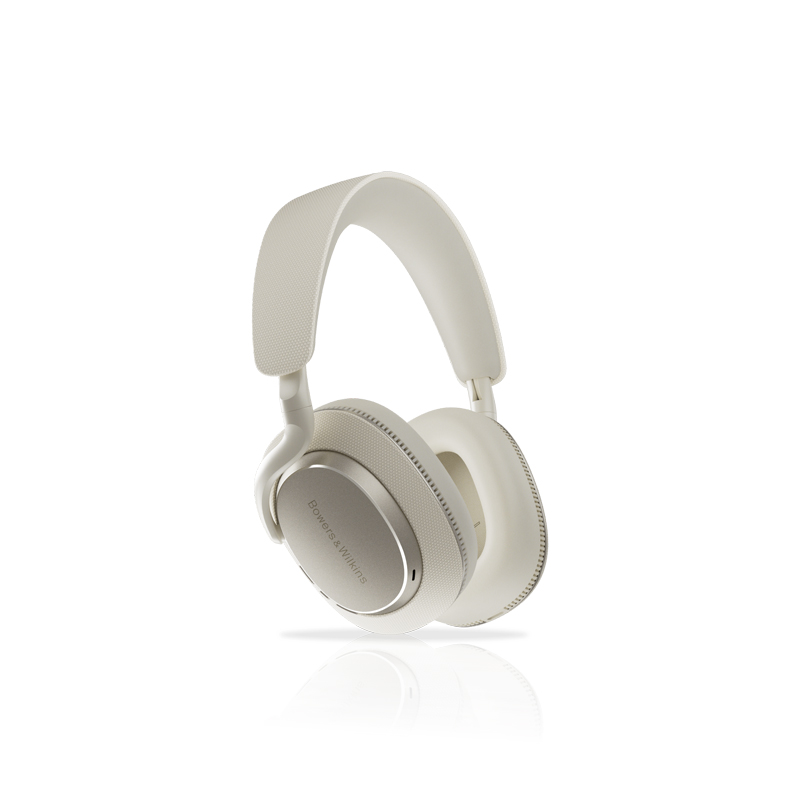All products featured are independently chosen by us. However, SoundGuys may receive a commission on orders placed through its retail links. See our ethics statement.
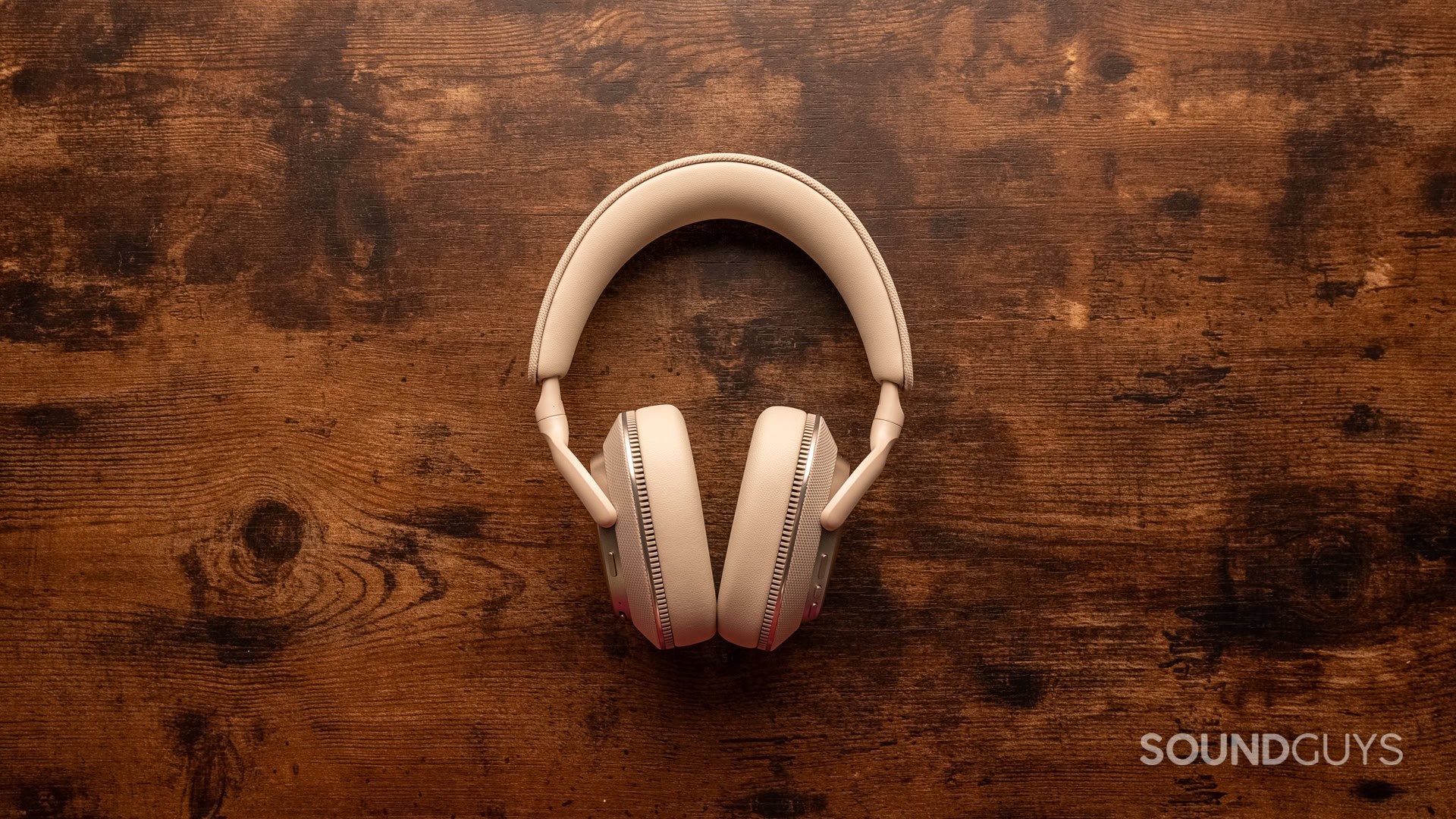

Bowers and Wilkins PX7 S3 review: An unexpected ANC heavyweight
August 13, 2025


Bowers & Wilkins PX7 S3
Weight: 300g
Travelers and commuters are always in the market for a great audio companion, and Bowers & Wilkins has long been on the higher-end of that conversation. But with the Bowers & Wilkins PX7 S3, we see a set of ANC headphones with rock-solid features and decent performance for a competitive price. So what’s the downside? Let’s take a look.
The Bowers & Wilkins PX7 S3 is for people who like a bassier sound, are unwilling to compromise on features, and don’t want to shell out for an Apple AirPods Max or Sony WH-1000XM6.
This article was published on August 13, and this is the first version of the article. Updates will follow as the market changes.
What’s it like to use the Bowers & Wilkins PX7 S3?
For those looking for an all-rounder set of active noise canceling (ANC) headphones, the Bowers & Wilkins PX7 S3 is an interesting option. Though it definitely won’t be everyone’s cup of tea, recent Harman acquisition Bowers & Wilkins knows what they’re doing when it comes to getting the big things right.
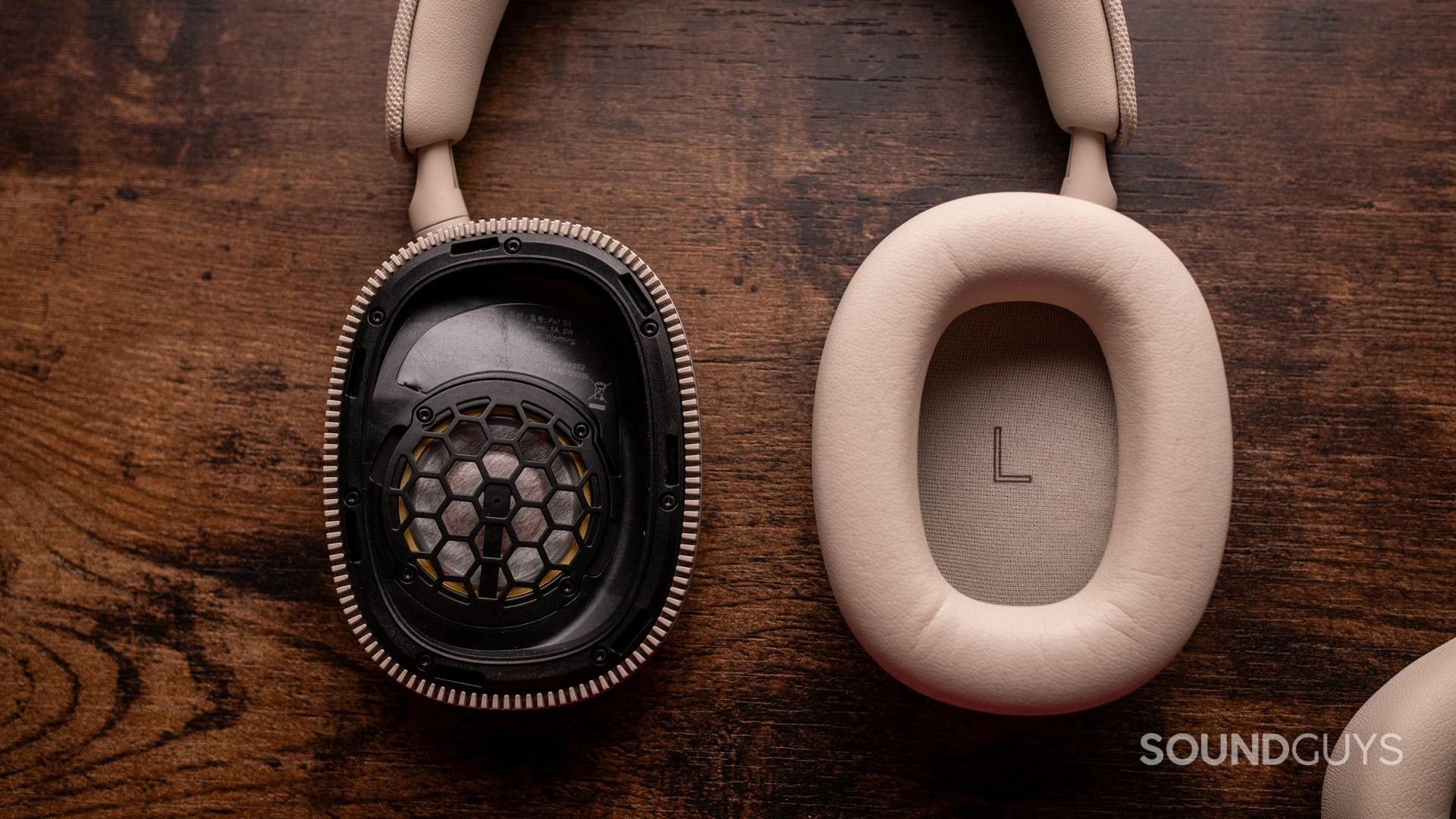
The Bowers & Wilkins PX7 S3 is a very good ambassador for travel headphones, as it’s not only fairly frustration-free from a build standpoint, but it offers a lot of design features that are geared towards reducing friction in your most frustrating times. For example, the headphones lie flat in the included travel case, and don’t require a ton of effort to pull out of said case once you’re in the air. You won’t have to worry about the included cables and other junk flying out of the case either, as the hidden door prevents everything from coming out unless you really want it to.
This iteration of PX7 is one of the more interesting I’ve seen in the last few years, as you can not only remove the earpads but also replace the headband padding as well. Though it may seem small — and you may never even notice — this means that you can repair your headphones should something happen to one of the least-durable parts of the product. That’s a nice check in the “plus” column, even if the battery isn’t replaceable, and the USB-C port isn’t reinforced or swappable.
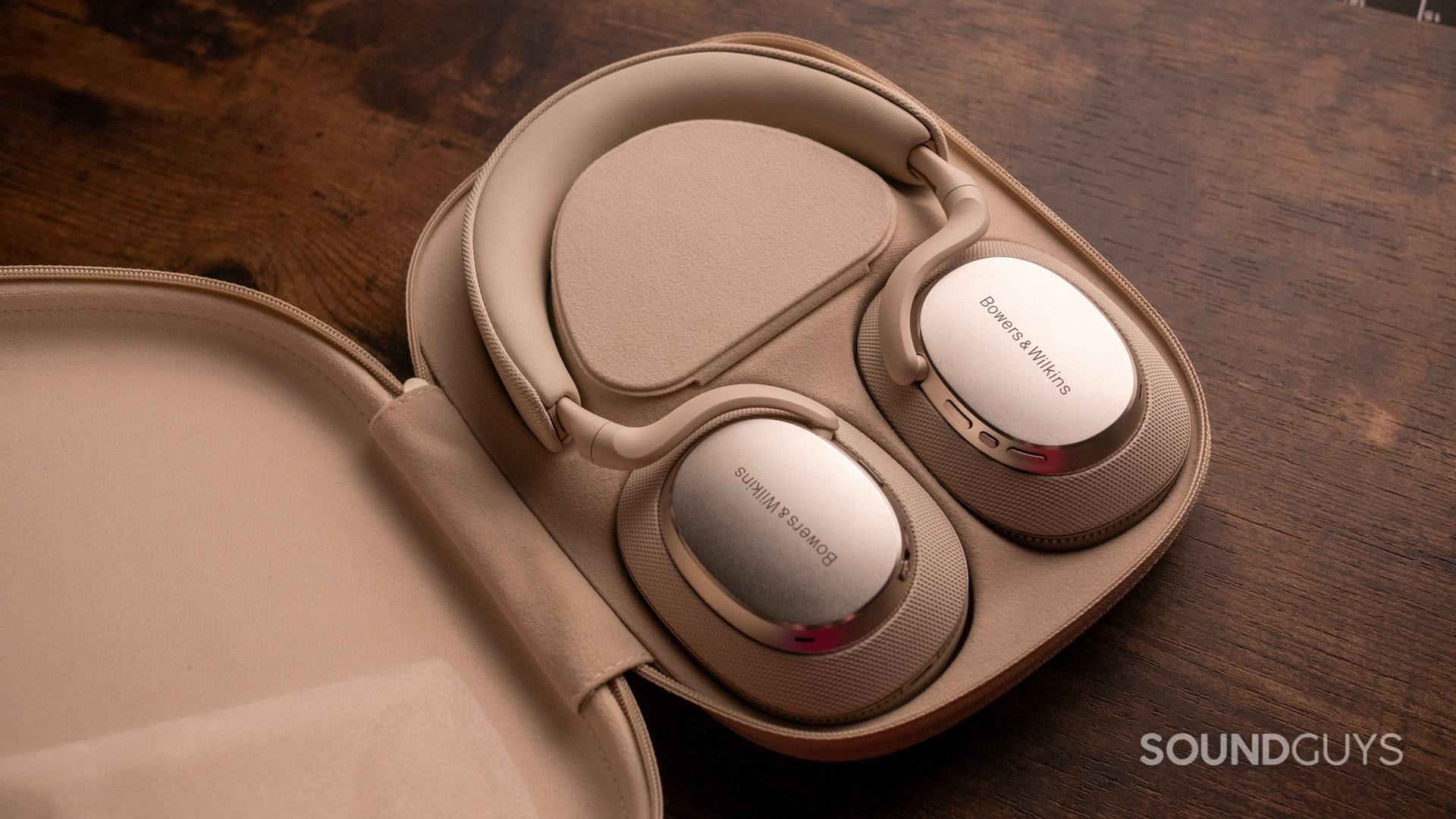
Using the headphones is a fairly comfortable experience, as the pads are sufficiently soft, the mass is reasonable, and the friction rod-style band doesn’t put too much clamping force on your head. Additionally, the cups are deep enough for most ears, while the feedback microphone doesn’t protrude out enough to poke your pinnae. Having angled drivers also uses the volume of space around your ears most effectively, as there’s room for your outer ear to slot into without getting bunched, mashed, or pinched.
The controls of the Bowers & Wilkins PX7 S3 are all physical, meaning that your only mode of interaction with the headphones outside of the app is buttons and sliders instead of a touch interface.
| Input | Playback action | Call action |
|---|---|---|
| Input Left Quick Action button | Playback action ANC mode toggle / Voice assistant | Call action ANC mode toggle / Voice assistant |
| Input Left slider | Playback action Power / Bluetooth pairing | Call action Power / Bluetooth pairing |
| Input Right top button | Playback action Volume up | Call action Volume up |
| Input Right middle button (1x) | Playback action Play / Pause | Call action Answer call / switch calls |
| Input Right middle button (2x) | Playback action Track forward | Call action End call |
| Input Right middle button (3x) | Playback action Track backward | Call action N / A |
| Input Right middle button long press | Playback action N / A | Call action Decline call |
| Input Right lower button | Playback action Volume down | Call action Volume down |
What are the best features of the Bowers & Wilkins PX7 S3?
The Bowers & Wilkins PX7 S3 focuses on fundamentals, so many features outside of the typical scope of making headphones that sound good are left behind. For example, while the headphones have all the silicon to support some digital signal processing (DSP) and high-bitrate Bluetooth streaming, the Bowers & Wilkins PX7 S3 doesn’t offer biometrics, scene emulation, or streaming service trials and offers in the app. The internal DAC being accessible via the USB port enables the wired options, and it’s a design we hope more manufacturers adopt soon to enable more flexible connection options with ANC headphones.
Much of the app cruft tends to get in the way of things sometimes with other headphones, but that’s not the case here. Instead, the Bowers & Wilkins PX7 S3 has a more palatable stable of features like a decent transparency mode, limited in-app 5-band EQ, Multipoint, and the ability to mess with some of the finer settings of the cans via your smartphone.
How does the Bowers & Wilkins PX7 S3 connect?
The Bowers & Wilkins PX7 S3 is able connect to to your source devices wirelessly or via the USB-C port on the bottom of the headphones — so you should not have any difficulty getting the kind of transfer rates or compression quality you’re okay with. Android phone owners will be able to connect over Bluetooth 5.3 over the SBC, AAC, and aptX Adaptive family of codecs including aptX Lossless. For phones that don’t support aptX Lossless, you can also use aptX HD, which isn’t a large step down. iOS devices will not be able to use anything but AAC, however.
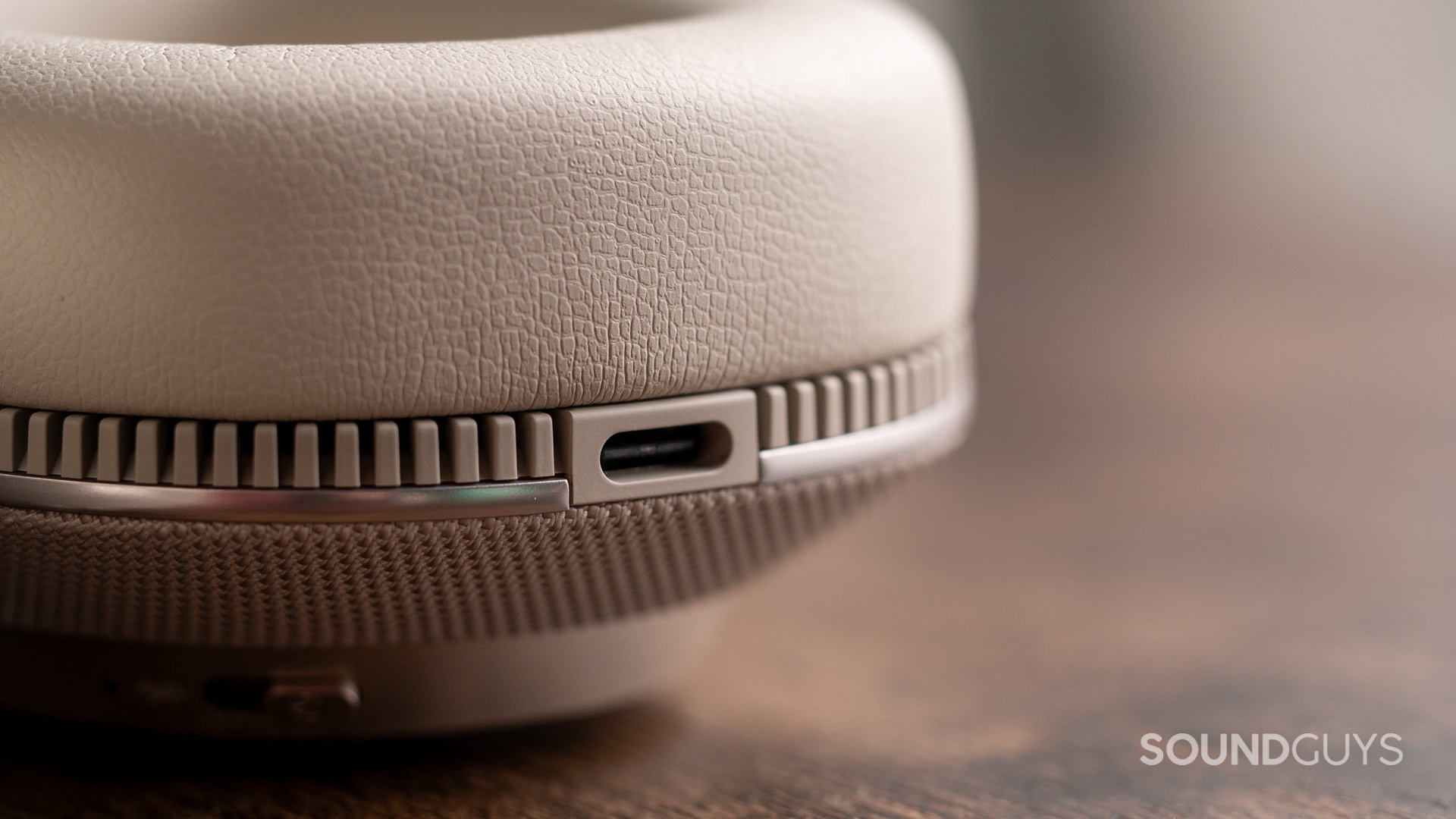
The packaging includes a 3.5mm to USB-C cable, and a USB-C cable that can carry power and data. That enables the USB port on the bottom of the headphones to carry either a digital or analog wired signal, and use the onboard DAC to process the data. Consequently, lossless audio lovers should appreciate this quite a lot — even if some EQing is necessary.
If your source does not support Fast Pair or Swift Pair, you can always pair your headphones the old fashioned way.
- Open your source’s Bluetooth menu. Hit scan.
- Put the Bowers & Wilkins PX7 S3 on your head, and push the power/pairing slider all the way up and hold until you hear the pairing mode indication.
- In the list of available devices on the source’s screen, tap the entry for the Bowers & Wilkins PX7 S3.
How long do the Bowers & Wilkins PX7 S3’s battery last?
The Bowers & Wilkins PX7 S3 is still completing our standardized testing run for battery life, but Bowers & Wilkins claims this should peter out around 30 hours. Products like ANC headphones with larger batteries tend to last quite a bit longer than others, as they don’t require a recharge as often as products with much smaller batteries do. For example, earphones.
Though charge times are a bit longer than they would be for, say, true wireless earphones, Bowers & Wilkins claims you can get 7 hours of listening time with a 15 minute charge. Headphone batteries are notably smaller than those of smartphones, so even if you don’t have quickcharge: you shouldn’t have to wait around for long to get a topped-up battery.
How well do the Bowers & Wilkins PX7 S3 cancel noise?
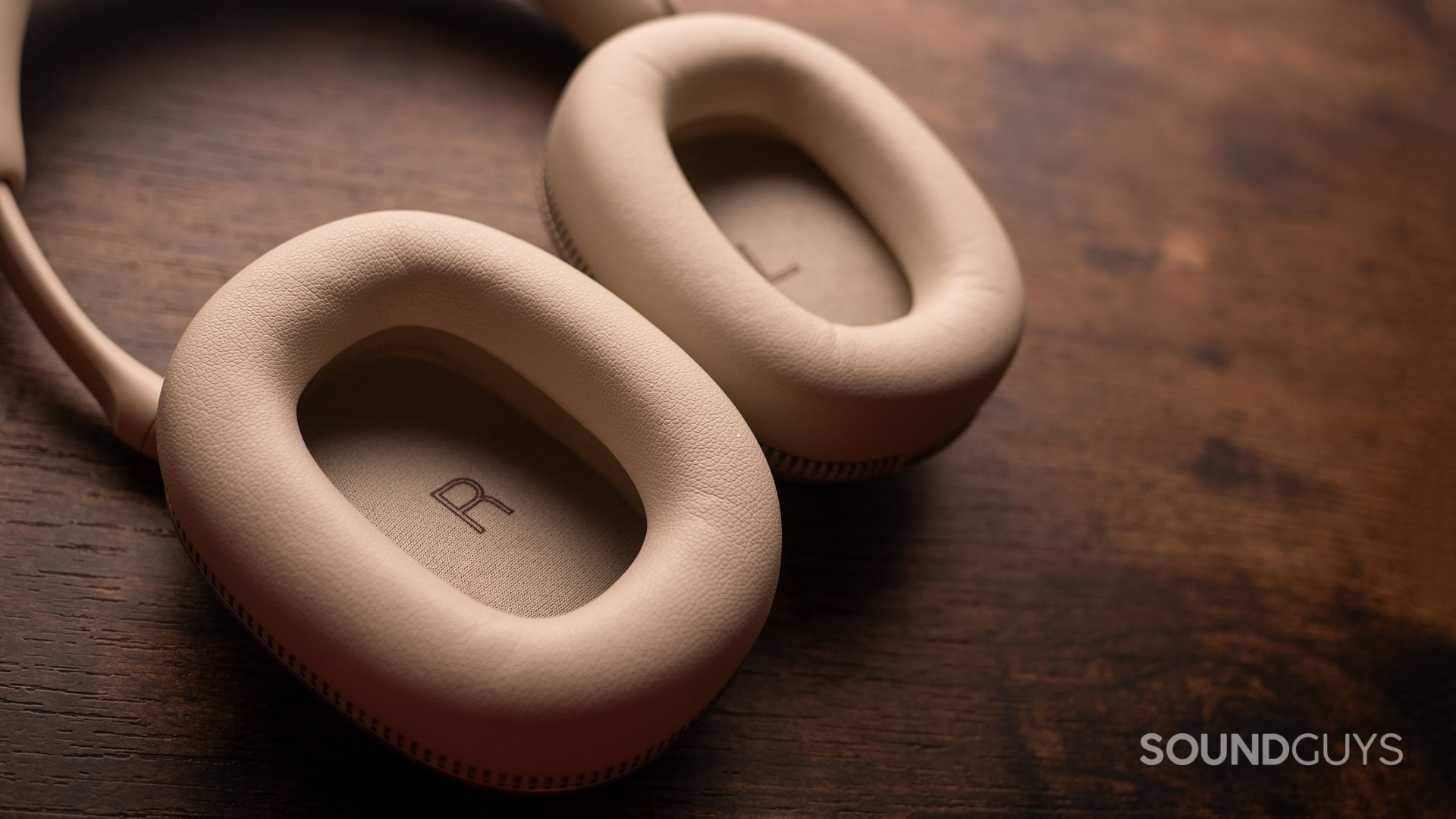
In terms of dispelling outside junk noise, the Bowers & Wilkins PX7 S3 handles this task fairly well. Reducing perceived loudness of all samples by an average of 83-84%, the headphones aren’t technically the best by any stretch, but they’re solidly within the conversation of really good ANC headphones. Considering that the Bowers & Wilkins PX7 S3 is priced to compete with the likes of the Sony WH-1000XM6 and Bose QuietComfort Ultra Headphones, this is a reasonable result, even if you might find the headphones lagging in peak noise attenuation a little bit. Their average attenuation is buoyed quite a lot by being able to handle the lowest octave quite well, owing to a very easy-to-achieve seal.
Loading chart ...
I will say that much of the performance here is due to this ease of getting a good seal. When you get headphones that make a good seal on your head, they tend to isolate — or, physically block the sound from reaching your ear — really well. This, in turn, maximizes the chances that the ANC can more effectively attenuate whatever noise does end up making it through. If you wear glasses, have taxi cab doors for ears, or otherwise struggle to get a good fit, your experience might vary from ours. However, those angled drivers leave plenty of space for your ears to go without getting mashed into the mesh or ear pads, so there isn’t much to get in the way of a good fit.
How do the Bowers & Wilkins PX7 S3 sound?
The Bowers & Wilkins PX7 S3 is definitely bassier than most, and some will find it to be a love-it-or-hate-it affair. However, there are fundamentals that the headphones get right — and you can always EQ them to be pretty reasonable-sounding
Reviewer’s notes
Editor’s note: this review uses a hover-enabled glossary to describe sound quality based on a consensus vocabulary. You can read about it here.
Objective Measurements
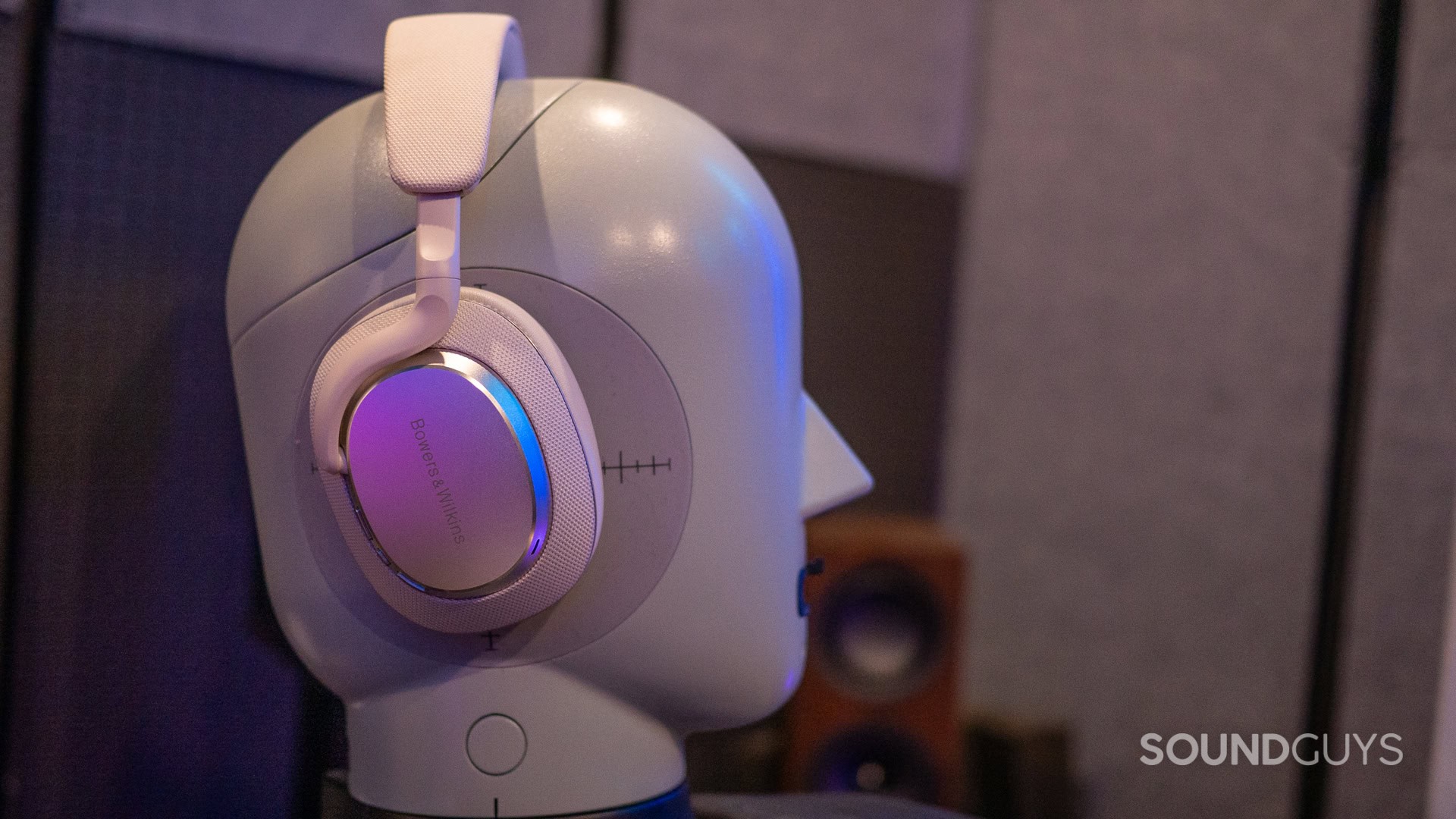
I can’t tell you how many times I had to re-test these headphones before I believed that I was getting a representative result of what I was hearing. Needless to say, this is pretty far from what we consider to sound more or less normal. Though that’s not necessarily a bad thing, as one of the more interesting findings of recent research into listener preferences was that the same people can love wildly different tunings. It can be a punishing exercise to measure headphones because of several factors, but it seems as though the main culprit behind divergent ranges of emphasis is the decision to put the drivers of the headphones in the lower part of the ear cup. While that makes it much easier for a human to fit, it can make measuring these cans a bit more troublesome. Consequently, you’ll likely see a lot of different outlets with divergent results. This is about as accurate as we’re going to get with these headphones, and I have to say that it looks worse than it sounds.
Loading chart ...
It takes brass ones to buck the trend of overly-tailored frequency responses, but I like that people are still doing it. In this case, however, there are definitely times when the highs can get a little grating, even though the emphasis in the upper octaves can offer the illusion of “detail.” Though a good seal is pretty easy to achieve, how you position the headphones can change the response significantly, so if your impressions deviate from what we have here, try moving the earcups up and down to find the best results to you.
Multi-Dimensional Audio Quality Scores (MDAQS)
The chart below shows how the Multi-Dimensional Audio Quality Score (MDAQS) algorithm from HEAD acoustics assesses the sound of the Bowers & Wilkins PX7 S3. The sound quality is rated on a scale from 1.0 (very bad) to 5.0 (very good).

- Timbre (MOS-T) represents how faithfully the headphones reproduce the frequency spectrum and temporal resolution (timing information).
- Distortion (MOS-D) represents non-linearities and added noise: higher scores mean cleaner reproduction.
- Immersiveness (MOS-I) represents perceived source width and positioning: how well virtual sound sources are defined in three-dimensional space.
We see a lot of audiophile-oriented headphones take a little bit of a bath here, and the Bowers & Wilkins PX7 S3 is no different: the headphones “merely” score a low-to-mid 4 on a scale of 1-5. However I should point out that this means most people will really like the sound, even if they find it to be imperfect. Especially of note is the ultra-high immersiveness score, which means that this sound is likely to appeal to users wanting spatial audio or content that relies on the illusion of 3D space. Consequently, gamers, and movie lovers should take special attention of the Bowers & Wilkins PX7 S3, as it offers a bit better performance than usual in this regard.
Can you use the Bowers & Wilkins PX7 S3 for phone calls?
The Bowers & Wilkins PX7 S3 is every bit as capable as its competitors in phone calls, supporting the latest headset protocols and featuring some noise reduction. However, you’ll just have to be the judge of this yourself with the recorded samples below. Just remember that this is a performance ceiling of the headset, and your network, client, or environment may make your calls worse than you’re expecting.
Bowers & Wilkins PX7 S3 microphone demo (Ideal conditions):
How does the microphone sound to you?
Bowers & Wilkins PX7 S3 microphone demo (Office conditions):
Bowers & Wilkins PX7 S3 microphone demo (Street conditions):
Bowers & Wilkins PX7 S3 microphone demo (Windy conditions):
Bowers & Wilkins PX7 S3 microphone demo (Reverberant space):
It seems as though the headphones make good use of the tech it has, and is able to reject some noise while maintaining quality. Just remember that it’ll never compete with a Shure SM7b or anything and you should be fine.
Should you buy the Bowers & Wilkins PX7 S3?
Though Bowers & Wilkins is known for being more of a luxury product, the latest cadre of ANC headphones is competitively priced with the Bowers & Wilkins PX7 S3. This means that it’s interestingly a true toe-to-toe competitor, coming in at a lower price than even some of its peers. On paper and in use, this should be a viable alternative that stacks up well against the Sony WH-1000XM6 and Apple AirPods Max at a lower price. However, it’s not quite a sure thing depending on the listener looking to buy these.
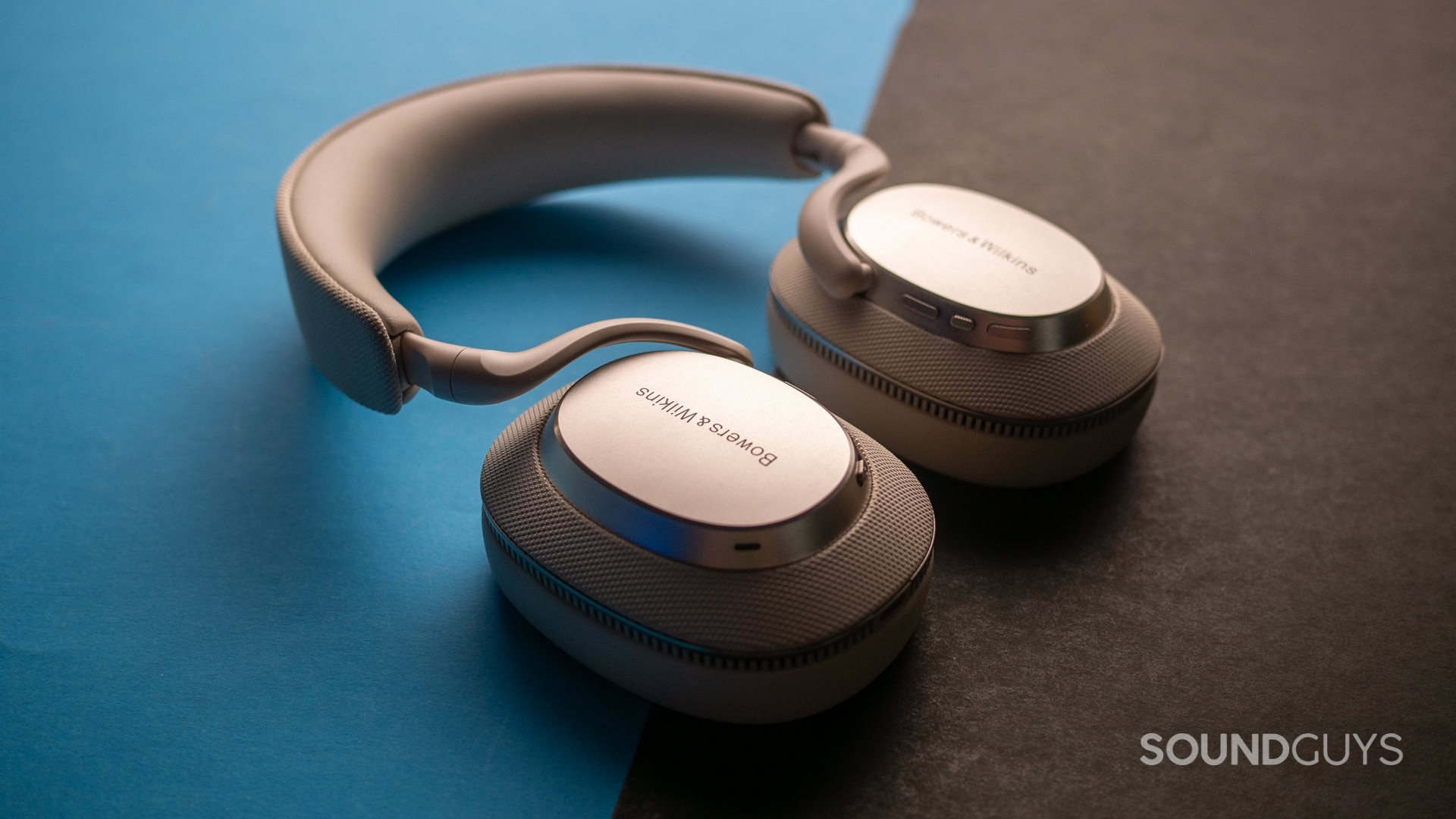
While I’m a big fan of the Bowers & Wilkins PX7 S3’s connectivity options, headphones that sound weird without a native means to address it can leave some wanting more. But there’s enough to work with in the PX7 S3 that makes them hard to dismiss — plenty of people will be happy with these, even if they don’t offer a more standard sound profile. It’s been fun to watch the likes of Bowers & Wilkins, JBL, and others start to crack the Bose/Sony/Apple oligarchy of ANC, and I hope it continues.
What should you get instead of the Bowers & Wilkins PX7 S3?
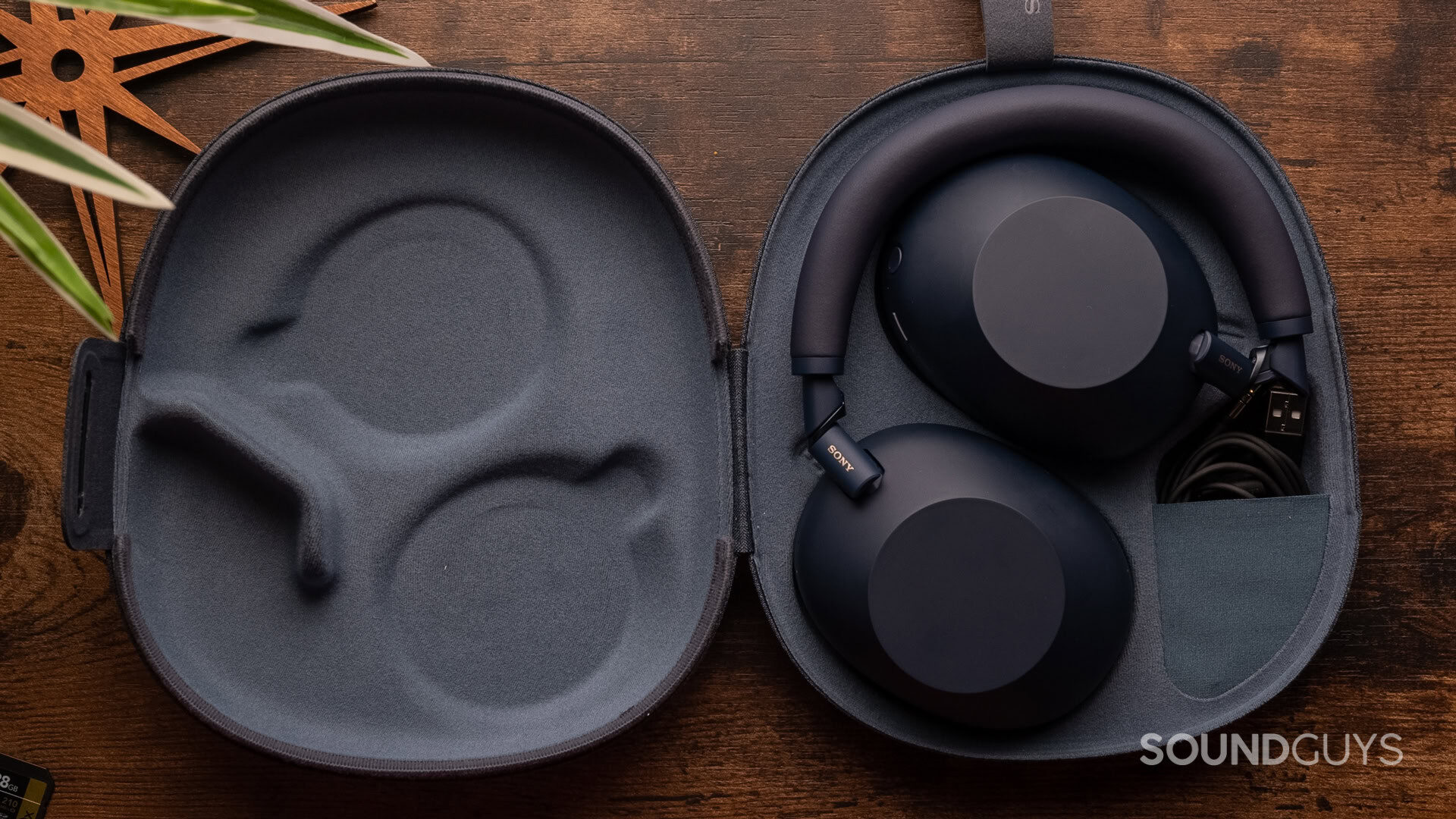
Alternatives to the Bowers & Wilkins PX7 S3 are plentiful, but your best fit depends on a few things. For example, are you looking for something fairly comparable, but $150 less? Then get the Nothing Headphone (1) ($299.99 at Amazon). If you want a competing model with better ANC and sound quality, but you don’t care about USB-C listening, then it’s hard to argue against the Sony WH-1000XM6 ($448 at Amazon). You could also go the Bose QuietComfort Ultra ($429 at Amazon) route, but your EQ options are limited there. Finally, Apple users shouldn’t think twice and get the Apple AirPods Max ($499 at Amazon) despite the higher pricetag.
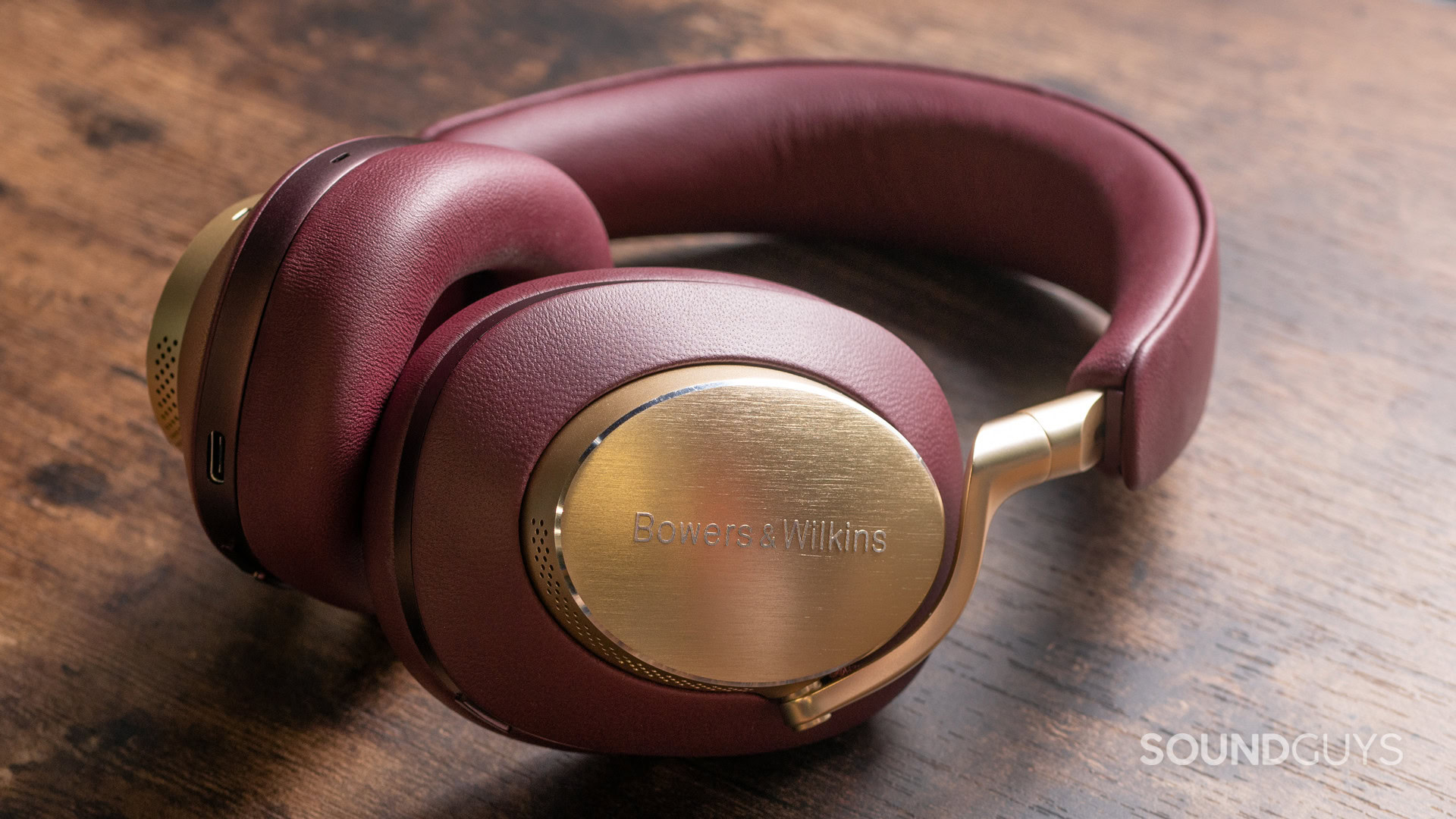
It’s tempting to compare the Bowers & Wilkins PX7 S3 to the Bowers & Wilkins PX8 ($699 at Amazon). Still, given the vastly higher pricetag, it’s unclear that most people would feel great about the slightly improved sound quality and worse comfort issues. That said, the Bowers & Wilkins PX7 S3 is quite new, while the PX8 is starting to slip in price a bit during typical sales periods. It’s entirely possible that you could find this model on sale near the full price of the Bowers & Wilkins PX7 S3 at some point in the future.
Bowers & Wilkins PX7 S3 review: FAQs
The Bowers and Wilkins PX7 S3 support Fast Pair, but sometimes you don't have a device that can be used with this feature. You can always pair the headphones the old-fashioned way.
- Turn on the headphones by pulling the power/Bluetooth slider all the way. Hold for three seconds until the chime sounds.
- The headphones are now in pairing mode. On your device, open the Bluetooth menu.
- Hit "scan."
- Find your headphones in the list of available devices and wait for pairing to complete.
- (Optional) Install the Bowers and Wilkins Music app and follow the prompts to connect the headphones to the app.
As these headphones do not have an ingress protection rating, they are not good for sweaty activities — despite the heavy-handed marketing with athlete David Beckham.
No.
Yes. You can see how effective they are in the full review.
Yes. Both platforms are compatible with the app and headphones.
Yes. The headphones have Multipoint, and they can connect to wired sources as well.
Yes.
Yes, you can hear samples in our review.
Yes.
The headphones perform fairly well in MOS-Immersiveness (Multi-Dimensional Audio Quality Scores), meaning the headphones are able to recreate the illusion of 3D space well. However, you'll likely want to use the wired listening capability of the headphones to eliminate latency.
Yes. The headphones can connect to 3.5mm TRS jacks, and USB-C ports that can carry a data stream or analog audio passthrough.
Yes. You can replace the ear cushions as well as the headband padding.
Any audio source with Bluetooth or an analog jack can connect to the Bowers and Wilkins PX7 S3.
Yes. Allegedly, a 15-minute charge offers up to 7 hours of listening time. It is not specified whether or not this is with the ANC or other features enabled.
Thank you for being part of our community. Read our Comment Policy before posting.
